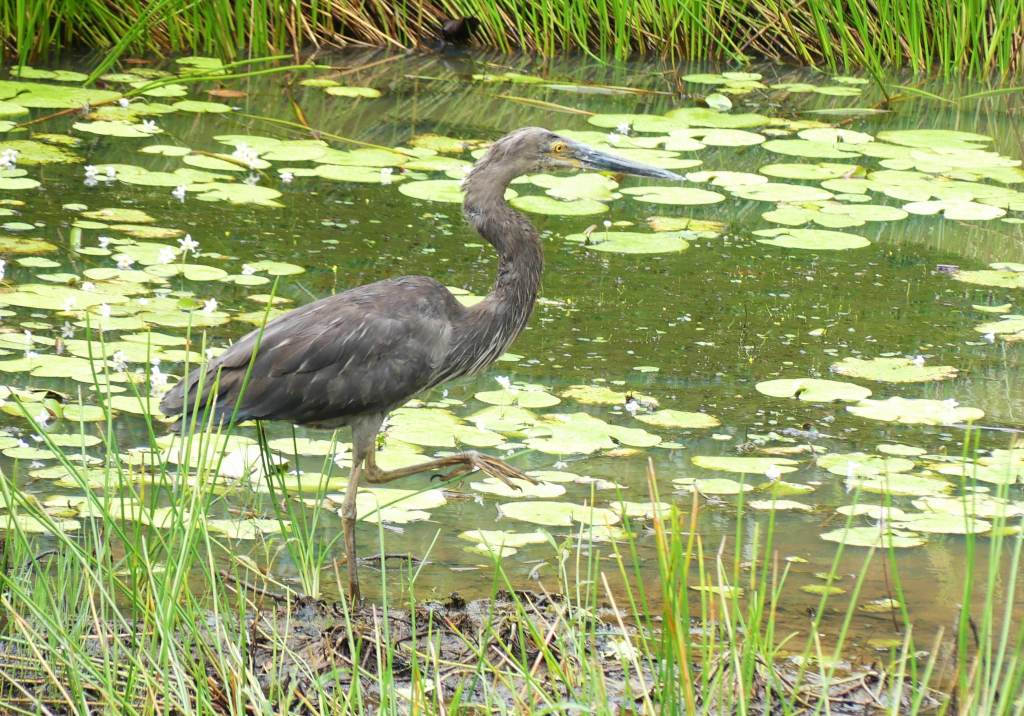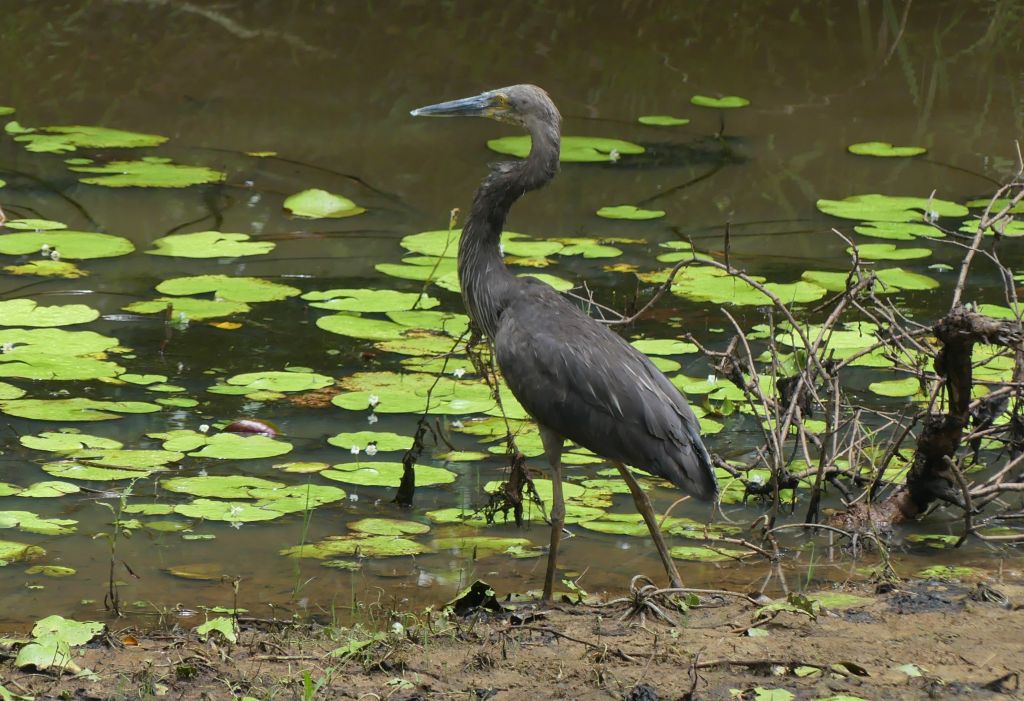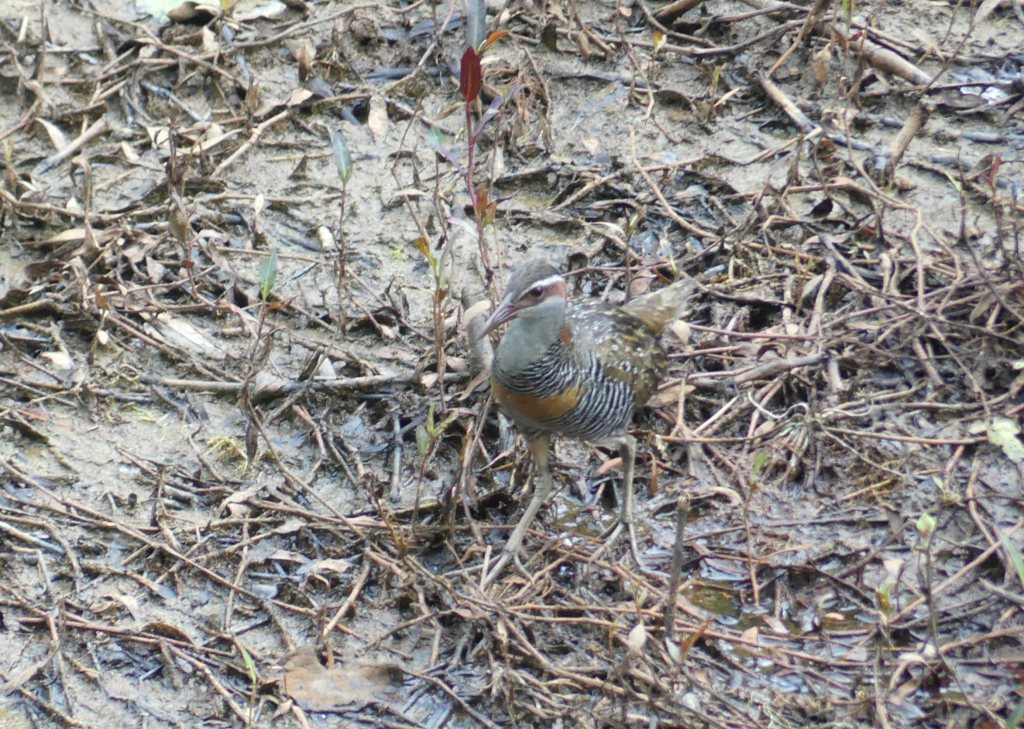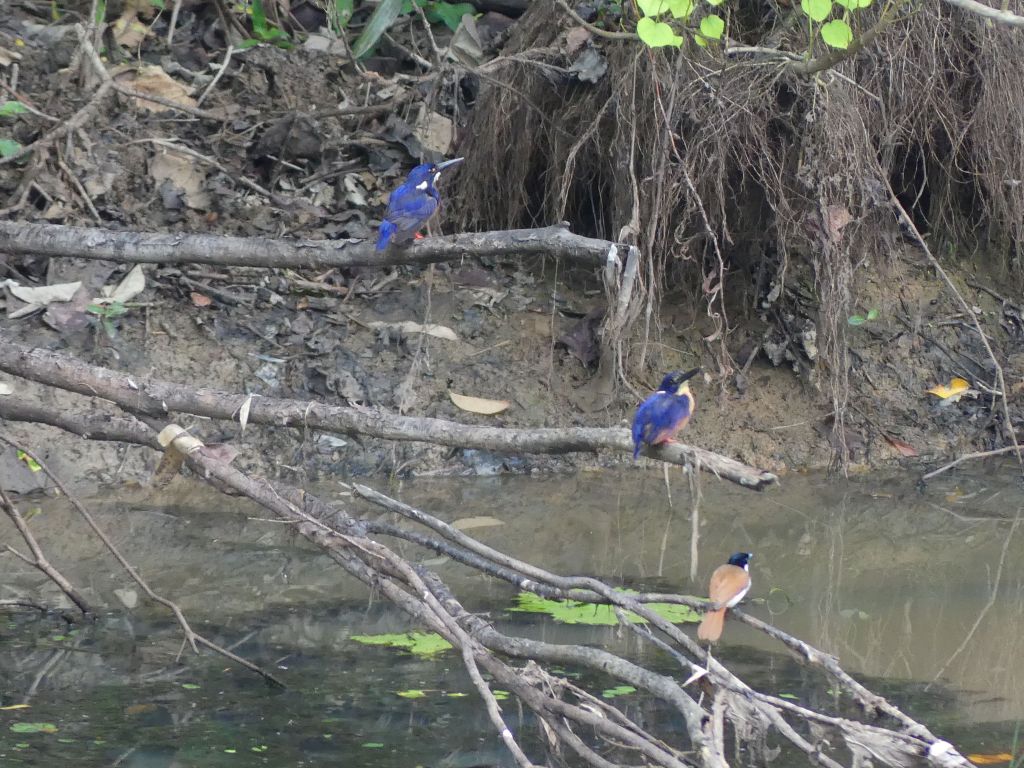Please be warned that this post is all about one of my favourite Daintree water birds which I first saw nesting on Barratt Creek in 1986. At that stage we were a long way from restoration work and any bird activity away from the narrow esplanade along Barratt Creek was minimal. At various times we would hear the throaty call of a Great-Billed Heron and when we eventually had a boat on the creek we often saw one perched or if we disturbed it we would watch its majestic form flying above the water as it flew ahead of us towards the main river.

Once we had established wetlands in the early 2000s I was thrilled to occasionally catch a glimpse of a Great-billed Heron or know from it’s call that it was not far away. Now some twenty years later sightings are more frequent although being in a suitable location with a camera at hand is another story! This particular bird we are presuming is a regular visitor as it seems to be less nervous. We also presume that it has been watching us more than we have seen it and has now decided that we are not such a threat. I hope so.
After flying up to perch in a nearby Leichhardt tree (good sturdy horizontal branches) as I approached our rather open ‘hide’ this Great-billed Heron started to relax and preen. I tried to remain as unobtrusive as possible and eventually it flew down to the mudflat right in front of the hide.

I loved watching the slow and careful footsteps as the bird approached the water, seemingly it was totally focused on any potential prey movement.

I was poised, ready to record some action…………

Then it turned around and walked slowly in the other direction before having another preen.

After all that potential excitement it was then back to the favourite game of ‘statues’ – a very typical pose.










































